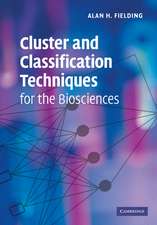Modelling Natural Action Selection
Editat de Anil K. Seth, Tony J. Prescott, Joanna J. Brysonen Limba Engleză Hardback – 9 noi 2011
Preț: 1156.62 lei
Preț vechi: 1344.90 lei
-14% Nou
Puncte Express: 1735
Preț estimativ în valută:
221.35€ • 230.24$ • 182.73£
221.35€ • 230.24$ • 182.73£
Carte tipărită la comandă
Livrare economică 14-28 aprilie
Preluare comenzi: 021 569.72.76
Specificații
ISBN-13: 9781107000490
ISBN-10: 1107000491
Pagini: 560
Ilustrații: 135 b/w illus.
Dimensiuni: 183 x 254 x 30 mm
Greutate: 1.27 kg
Ediția:New.
Editura: Cambridge University Press
Colecția Cambridge University Press
Locul publicării:New York, United States
ISBN-10: 1107000491
Pagini: 560
Ilustrații: 135 b/w illus.
Dimensiuni: 183 x 254 x 30 mm
Greutate: 1.27 kg
Ediția:New.
Editura: Cambridge University Press
Colecția Cambridge University Press
Locul publicării:New York, United States
Cuprins
Foreword Peter M. Todd; 1. General introduction Anil K. Seth, Joanna J. Bryson and Tony J. Prescott; Part I. Rational and Optimal Decision Making: 2. Introduction to Part I: rational and optimal decision making Anil K. Seth, Tony J. Prescott and Joanna J. Bryson; 3. Do we expect natural selection to produce rational behaviour? Alasdair I. Houston, John M. McNamara and Mark D. Steer; 4. Optimised agent-based modelling of action selection Anil K. Seth; 5. Compromise strategies for action selection Frederick L. Crabbe; 6. Extending a biologically inspired model of choice: multi-alternatives, nonlinearity and value based multidimensional choice Rafal Bogacz, Marius Usher, Jiaxiang Zhang and James L. McClelland; 7. Bayesian approaches to modelling action selection Max Berniker, Kunlin Wei and Konrad Kording; 8. Post-retrieval inhibition in sequential memory search Eddy J. Davelaar; Part II. Computational Neuroscience Models: 9. Introduction to Part II: computational neuroscience models Tony J. Prescott, Joanna J. Bryson and Anil K. Seth; 10. Action selection and refinement in subcortical loops through basal ganglia and cerebellum James C. Houk; 11. Cortical mechanisms of action selection: the affordance competition hypothesis Paul Cisek; 12. Toward an executive without a homunculus: computational models of the prefrontal/basal ganglia system Thomas E. Hazy, Michael J. Frank and Randall C. O'Reilly; 13. Hierarchically organized behaviour and its neural foundations Matthew M. Botvinick, Yael Niv and Andrew C. Barto; 14. The medial reticular formation: a brainstem substrate for simple action selection? Mark D. Humphries, Kevin N. Gurney and Tony J. Prescott; 15. Understanding decision making deficits in neurological conditions: insights from models of natural action selection Michael J. Frank, Anouk Scheres and Scott J. Sherman; 16. Biologically constrained action selection improves cognitive control in a model of the Stroop task Tom Stafford and Kevin N. Gurney; 17. Mechanisms of choice in the primate brain: a quick look at positive feedback Jonathan M. Chambers, Kevin N. Gurney, Mark D. Humphries and Tony J. Prescott; Part III. Action Selection in Social Contexts: 18. Introduction to Part III: action selection in social contexts Joanna J. Bryson, Tony J. Prescott and Anil K. Seth; 19. Agent-based models as scientific methodology: a case study analyzing the DomWorld theory of primate social structure and female dominance Joanna J. Bryson, Yasushi Ando and Hagen Lehmann; 20. An agent-based model of group decision making in baboons Russell A. Hill, Brian S. Logan, William I. Sellers and Julian Zappala; 21. Endogenous birth and death of political parties in dynamic party competition Michael Laver, Ernest Sergenti and Michel Schilperoord; 22. On optimal decision-making in brains and social insect colonies James A. R. Marshall, Rafal Bogacz, Anna Dornhaus, Robert Planqué, Tim Kovacs and Nigel R. Franks; 23. State-dependent foraging rules for social animals in selfish herds Sean A. Rands, Richard A. Pettifor, J. Marcus Rowcliffe and Guy Cowlishaw; Index.
Recenzii
'… the volume could make the basis for a terrific interdisciplinary graduate seminar, or serve as a means for postdoctoral researchers to get into a related field …' Marc Mangel, The Quarterly Review of Biology
Descriere
Uses cutting-edge computational models to explore the fundamental biological problem of action selection in nature.























